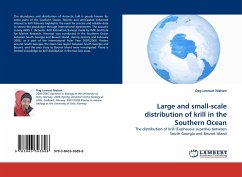
Biodiversity and species richness of large mammals
Province of Tshuapa in the Democratic Republic of Congo
Versandkostenfrei!
Versandfertig in 6-10 Tagen
29,99 €
inkl. MwSt.

PAYBACK Punkte
15 °P sammeln!
Sacred forests, rooted in local traditions, play a crucial role in biodiversity conservation. The study carried out in the Ene sacred forest, located in the Tshuapa province of the DRC, assessed the diversity of large mammals using photographic traps and a reconnaissance walk. Eight species were identified, including dwarf buffalo (Syncerus caffer nanus), leopard (Panthera pardus) and several duikers. Primates were the most represented, accounting for 78.84% of all sightings. The bonobo (Pan paniscus) was the most abundant species (FRI = 71.15%, IKA = 2.46 individuals/km), followed by the dwar...
Sacred forests, rooted in local traditions, play a crucial role in biodiversity conservation. The study carried out in the Ene sacred forest, located in the Tshuapa province of the DRC, assessed the diversity of large mammals using photographic traps and a reconnaissance walk. Eight species were identified, including dwarf buffalo (Syncerus caffer nanus), leopard (Panthera pardus) and several duikers. Primates were the most represented, accounting for 78.84% of all sightings. The bonobo (Pan paniscus) was the most abundant species (FRI = 71.15%, IKA = 2.46 individuals/km), followed by the dwarf buffalo. Three species - bonobo, leopard and Thollon's red colobus - are on the IUCN red list. The study underlines that traditional management rules in sacred forests contribute effectively to wildlife protection, as do the laws governing protected areas.












